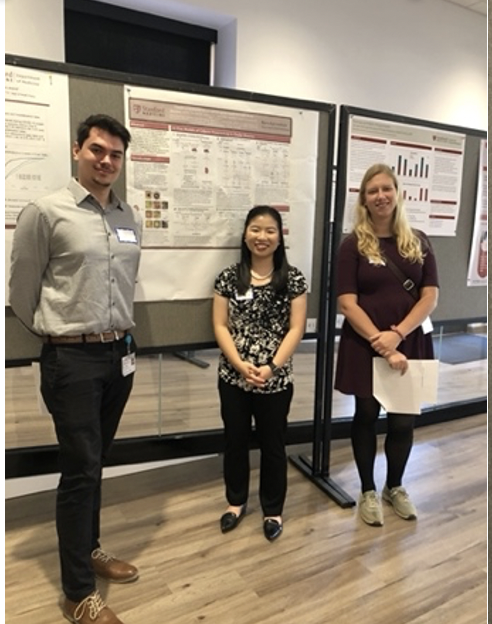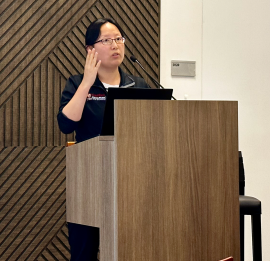Palo Alto, CA – The Sanford Research Park Symposium celebrated the diverse and impactful research undertaken at the Stanford Research Park (SRP). The event brought together faculty from different medical fields and junior scientists presenting research posters ranging from ophthalmology to pediatrics to pulmonary medicine.

The Mahajan lab presented four posters with Ditte Rasmussen winning an award for best poster. Her poster featured the lab’s work on a genotype-phenotype model for inherited retinal disease. Mahajan lab group members Elena Wang, Fabio Bigini, and Joel Franco also presented posters. Senior lab members and mentors Young Joo Sun and Julian Wolf were also in attendance.
Elena presented a project on calpains in eye disease. Fabio, a visiting Master’s student from the Netherlands, shared the lab’s work on CRISPR-Cas9 within the eye, and Joel showed his work on a mouse intravitreal injection implant (MI3).
Ditte said, “It was insightful to see some of the impressive work going on in other parts of the Stanford Research Park. Presenting our lab’s important work on genotype-phenotype modelling was a great experience.”
Vinit Mahajan, Stanford professor and vice chair of ophthalmology research, was on the panel of judges for the awards. He was recused from voting on posters from his lab.
Mahajan said, “Congratulations to Ditte for presenting the work of the lab’s structure-genomics. It is really great to bring together researchers and colleagues from across the research park and Stanford Medicine. Through this event, our lab has already initiated a new collaboration.”
Sui Wang Ph.D., assistant professor in the department of ophthalmology, gave a talk on her work identifying the genes involved in retinal development and diabetic retinopathy. Members of the Wang lab frequently collaborate with the Mahajan lab.

Mahajan said, “Sui represented our department well and we are proud of everything she has accomplished.”
Established on Page Mill Road in 1951 by Stanford University and the City of Palo Alto, the 700-acre research park brings together the best scientific minds and the most innovative entrepreneurs to accelerate the process of turning laboratory breakthroughs into life changing products.

